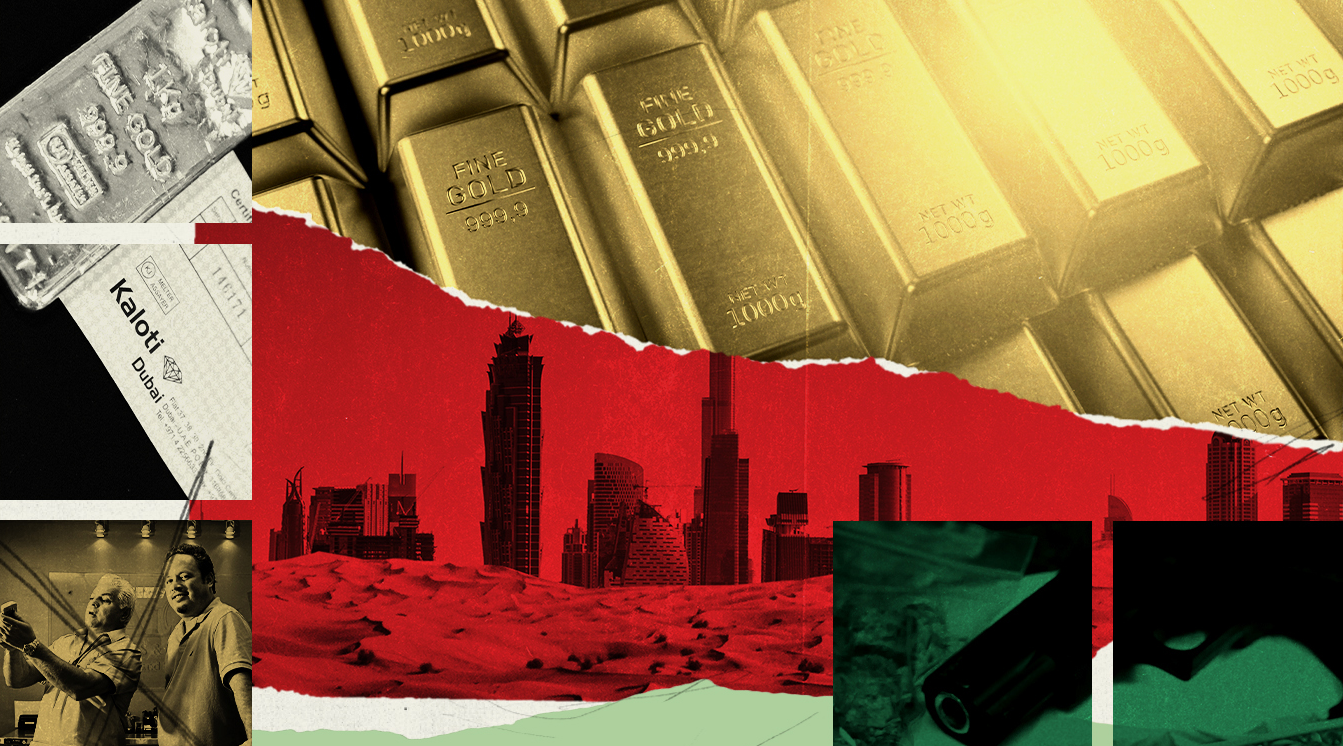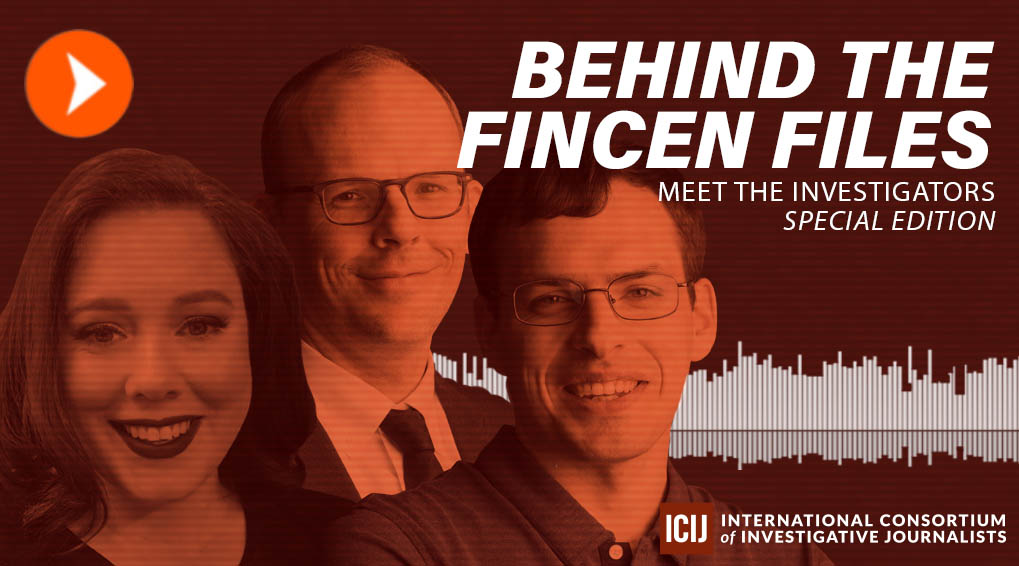MONEY LAUNDERING
‘Dirty Gold’ chases ‘three amigos’ from Miami to Peru and beyond
A new book explores a multibillion-dollar money laundering conspiracy by gold traders and the human side of the illegal mining economy.
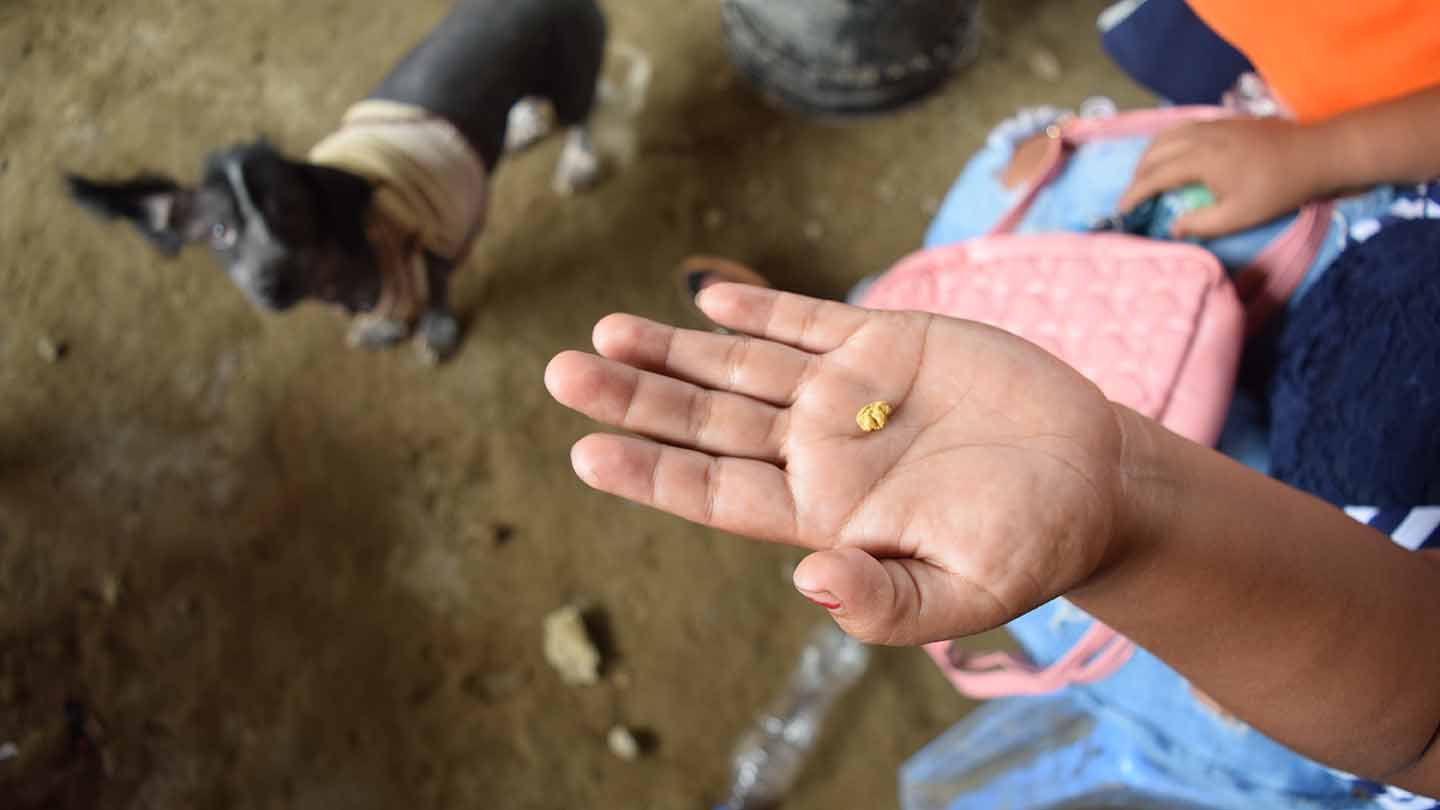
In “Dirty Gold: The Rise and Fall of an International Smuggling Ring,” journalists Jay Weaver, Nicholas Nehamas, Jim Wyss and Kyra Gurney explore the federal investigation into three Miami-based gold traders linked to a multibillion-dollar money laundering conspiracy. The scheme originates in Peru’s illegal gold market, but sprawls out into neighboring countries as “the three amigos” aim to stay one step ahead of the law.
The book, which came out earlier this month, evolved out of a series of stories published in 2018 while all four authors were colleagues at the Miami Herald.
ICIJ interviewed Gurney, a former ICIJ reporter who investigated the illicit gold trade as part of the FinCEN Files investigation, and Weaver, a longtime federal courts reporter at the Herald, about covering a multifaceted federal investigation, the regulatory failures that enable money laundering, and the human cost of the illegal gold trade.
How did you get involved with this story? I know it dates back to a series of Miami Herald stories (“Dirty Gold, Clean Cash”) that you worked on together, but how did this smuggling ring first enter your lives?
Jay Weaver: I’ve covered a lot of big stories on my court beat dealing with financial fraud, corruption, terrorism, drug trafficking — you name it. Miami is a real hub for all of that stuff. But this case, about a $3.6 billion money laundering conspiracy involving three local Miami brokers, stuck out in many ways.
Most of the gold, if not all of it, was coming out of Peru and being smuggled into these other countries because of a crackdown in Peru based on criminal gangs, drug traffickers, pollution, environmental degradation, mercury — all kinds of things that motivated the Peruvian government to finally criminalize this illegal mining activity.
When I looked into the gold trade, I realized it had been covered a fair amount on the ground in certain countries by investigative journalists in South America, but practically nothing in the United States. I quickly realized that I was going to need some help if we were going to turn this into a big project, so we brought in Nick Nehamas, the investigative reporter with the Herald’s I-team; Jim Wyss, the Latin American correspondent at the Miami Herald; and Kyra Gurney, who is an expert in Latin American affairs.
There were so many tentacles to this story. To make it complete, it couldn’t just be about a criminal investigation and about the characters who were accused of leading this gold smuggling effort. We had to look at the rainforest that was being devastated, the workers and miners toiling there at subsistence wages, and the whole criminal network behind the scenes controlling a lot of this subsistence or “artisanal” mining in this southern Peruvian area.
It wasn’t just a many-tentacled affair internationally, but even with the team that’s assembled by the federal government to investigate — DEA agents, U.S. attorneys, Homeland Security, and more. How difficult is it for so many different parts of the machine to come together to pull something like this off?
Weaver: I’ve been covering federal agencies and the courts forever. This was an example of highly unusual cooperation among various agencies working under one prosecutor in the U.S. attorney’s office. But it was a messy process. In order to make the case, the prosecutor had to put together this “fellowship of the ring,” as he called it. It was this motley crew of different agents — not only U.S. agents, but law enforcement on the ground too. Chile was extremely helpful. Peru was sort of helpful, but a bit of a struggle.
The cast of characters includes some outsized personalities among the smugglers and money launderers as well.
Weaver: Jim dealt with a money launderer in Peru, “Peter Ferrari,” who was providing a lot of the gold to NTR Metals and these brokers we called “the three amigos.” He was a flamboyant, made-in-Hollywood figure. Very flashy, liked to go to fancy restaurants, liked to have beautiful women on each arm. But I think an equally interesting character was this guy Harold Vilches, who Kyra covered backwards and forwards. Same source of gold, just a different salesman.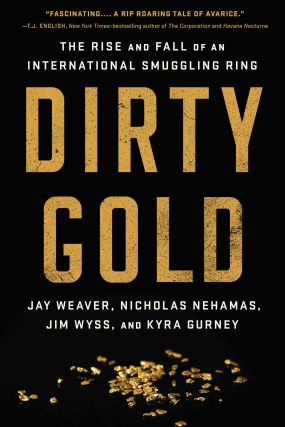
Kyra Gurney: Harold was really fascinating to me because he was so young. He was maybe 20, 21 when he started getting involved in gold smuggling. It was just so interesting to me that he had convinced so many older, seasoned businessmen to go along with his business and buy gold from him. A really fascinating character, and somebody who now admits that he let himself get totally carried away by his ambition.
Weaver: And he double-crossed a lot of people, which was remarkable. Just brazen. And then he took this trip to Tanzania to try to develop the gold trade in Africa for NTR Metals — with their blessing, according to him. It was a fascinating detour.
Gurney: It was interesting to talk to Harold about that trip because he had always been the one who double-crossed these other companies and gold traders, and then he’s the one who gets scammed in Tanzania and loses this investment. At one point, he says that he was detained by these armed men; he’s not sure if they were police or not. When he realized finally that he had been duped, he didn’t want to try to stay in Tanzania and get his gold back. He just wanted to get the hell out of the country and safely back to Chile.
What hurdles did you encounter while reporting these stories and working on the book?
Gurney: I traveled to Chile twice to work on the reporting, but because I didn’t have any contacts in Chile, I was starting from scratch. And initially we weren’t able to interview Harold. He had sold his life rights to this film company, so he wasn’t contractually able to talk to us. So initially, I was focused on interviewing all the different investigators in prosecutors in Chile — this had also been a really big case for them — and trying to piece together Harold’s story based on their experiences investigating him.
The prosecutors and police in Chile were understandably very proud of this case, so once I was able to finally sit down with them, they were really excited to talk about it and eager to share everything that had gone into this investigation.
Weaver: On our end, Nick and I had to work with a lot of federal sources and get them comfortable working with us. Now, I know a lot of them. They weren’t strangers, and I had built trust with them over a long period of time. But nonetheless, this is the federal government, and you’re trying to get them to talk to you while there’s an ongoing criminal investigation.
What was so different about this from a Miami Herald investigative project or something like the FinCEN Files project is that it could not just be built on attribution to a lot of different parties. We had to find so much detail to create scenes, episodes, and characters with a driving narrative that put the reader there.
Why is gold such a target for money laundering?
Weaver: I think one of our takeaways is that this market for gold is truly international. The appetite for this gold is in the United States, but it’s also in places like China, India, the Middle East. It’s all over, and the demand is great. So you’ve got this marketplace that just isn’t as buttoned down as the banking industry.
If gold is coming from artisanal mines, subsistence miners, and these off-the-grid locations, it’s really hard to trace it, which means you can wash a lot of dirty money. It goes through middlemen in this town called Puerto Maldonado, then it goes through more middlemen in Lima. It’s exported on commercial flights to the United States. All this gold is declared! But you don’t really know where it’s from, whether it’s legitimate, how it was obtained.
It’s tied into our banking system. It’s tied into our Bank Secrecy Act laws and into a lot of regulatory programs that corporations have to maintain. But the reality is, for all that artifice, it really is impossible to know where this gold was originally from — except possibly for the larger conglomerate mines, where you have a single source and can pinpoint where it was bought.
In the book, you describe myriad systems in place in the gold trade where, arguably, all of this should have been caught. How does something like this slip past so many different choke points in the regulatory framework?
Gurney: One thing that was really interesting for me is that Elemetal [the parent company of NTR Metals] had actually passed audits to make these “good delivery lists.” Once you’re on them, your gold is considered fully accredited and banks are more willing to do business with you.
Elemetal had passed these audits even while their three traders were involved in this enormous scheme. It really goes to show that this mainly self-regulatory system has a lot of holes in it, and those audits need to be a lot more stringent.
Weaver: There were emails and text messages uncovered in the court records where you saw the three NTR brokers communicating with each other, and they’re literally trying to pull the wool over the eyes of their compliance officer — a former U.S. customs agent who had a long history investigating gold smuggling cases and money laundering cases
Elemetal knew about Peter Ferrari. He was in the news. So when “the three amigos” at NTR Metals first wanted to do business with him, they were warned by the compliance officer. Their bosses said the same thing. But they created these straw men working for shell companies, where they were able to use all these layers to conceal his involvement.
Companies create compliance programs that seem to pass muster. They get the regulatory “good housekeeping” seal from the gold exchanges and present this information through disclosures to the federal government. But even if the information is there, it could be completely wrong, and there could be no legitimate players involved. And compliance officers go along with it to give the impression that it’s all above board and lawful. That’s where the system fails.
Gurney: If there’s a crackdown in Peru, you just smuggle the gold across the border to Chile. Or if there’s a crackdown all across Latin America, then you can simply sell your gold through the Emirates, where there are very few controls. It’s a very difficult industry to completely eliminate the opportunities for money laundering, because it’s so global and you can just keep shifting your business.
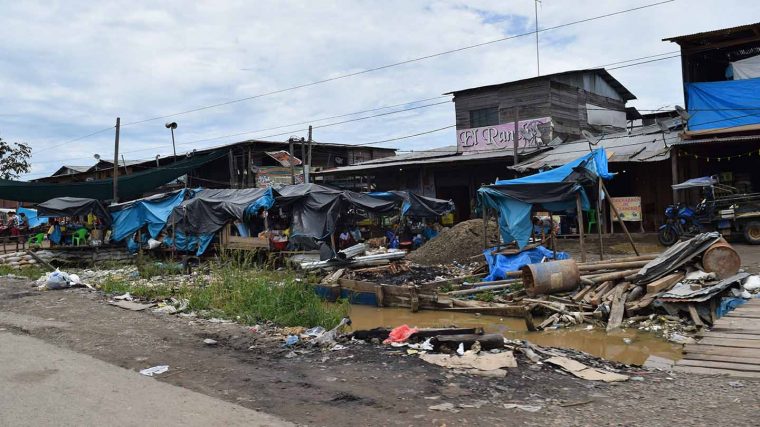
I think that many people view gold smuggling or money laundering as a “paper crime” where the only real victims are governments being swindled out of tax money, but the book goes into detail about the human and environmental costs to this illegal mining economy.
Weaver: Jim Wyss visited Puerto Maldonado, which is the regional hub of this area of Peru called Madre de Dios [the site where much of the illegal mining outlined in the book takes place]. This isn’t just some two-square-mile area; it’s an area five times the size of New York City, and the area is remote.
In this area, you have thousands of poor miners surrounded by indigenous people who are literally off the grid. These people live in shanty towns and they’re just trying to get by, so they’re the ones at the lower end producing a lot of this gold that ends up aggregated by these middlemen in the cities — who are the ones making money exporting this gold.
But the devastation behind the scenes was brought to the attention of the world by Pope Francis — he called the gold trade “a false god that demands human sacrifice.”
It’s a struggle between the First World and the Third World, and the Third World is barely getting by. They’re subsisting on whatever morsels of gold they can sell. There’s poverty, exploitation of child labor, prostitution, pollution with the mercury and cyanide that are used to separate the gold from the rock and ore. There’s pools of this toxic stuff, and it gets into the food chain.
Gurney: In Peru and Colombia, there have been lots of efforts to figure out how to formalize these informal miners, because as long as they remain in this gray area, it’s really hard for them to access financing from banks and safer technologies, and they’re much more vulnerable to the criminal groups in these areas. It’s a really thorny problem that nobody’s come up with a great solution to.
How did diving into this investigation and reporting on gold smuggling and money laundering change your worldview?
Gurney: I’m a lot more conscious of what I’m buying. I try to think about it more, not just with gold — which I obviously don’t buy a lot of — but things like coffee or chocolate. It just makes you realize that as consumers, we do have a way to push companies toward having better practices
Weaver: At first, I was looking critically at the subsistence miners, thinking that they were at the root of this problem. Then I realized that that’s not the case at all; they’re actually exploited here. They’re victimized here. They’re trying to make a living.
This interview has been edited for clarity.
